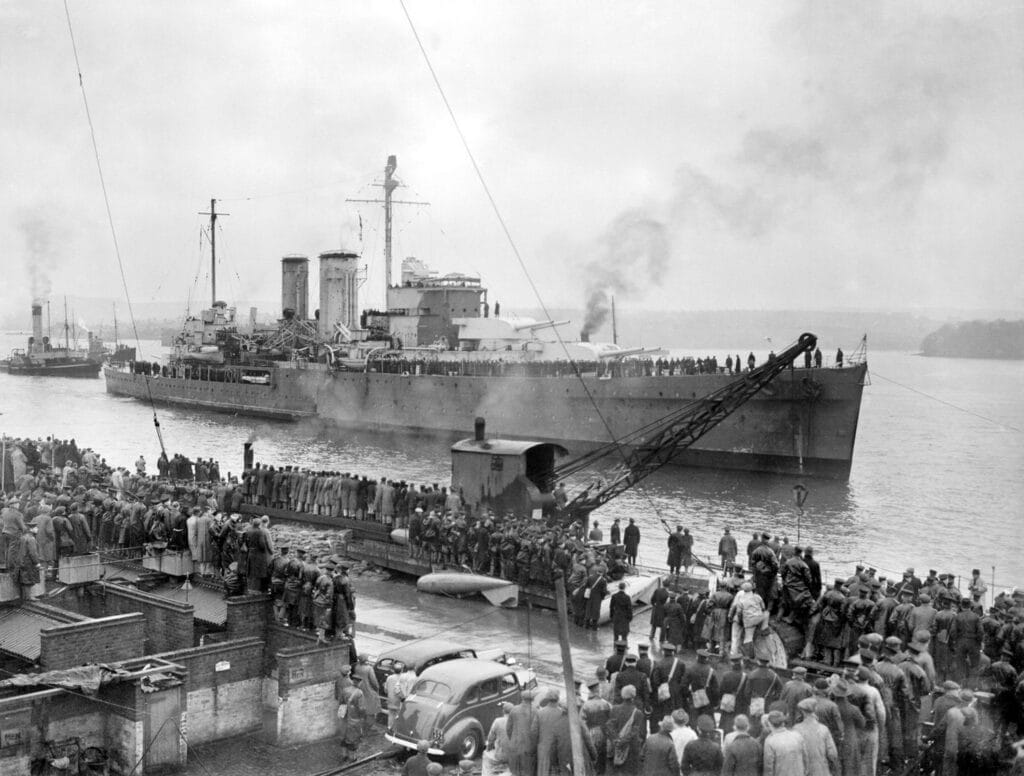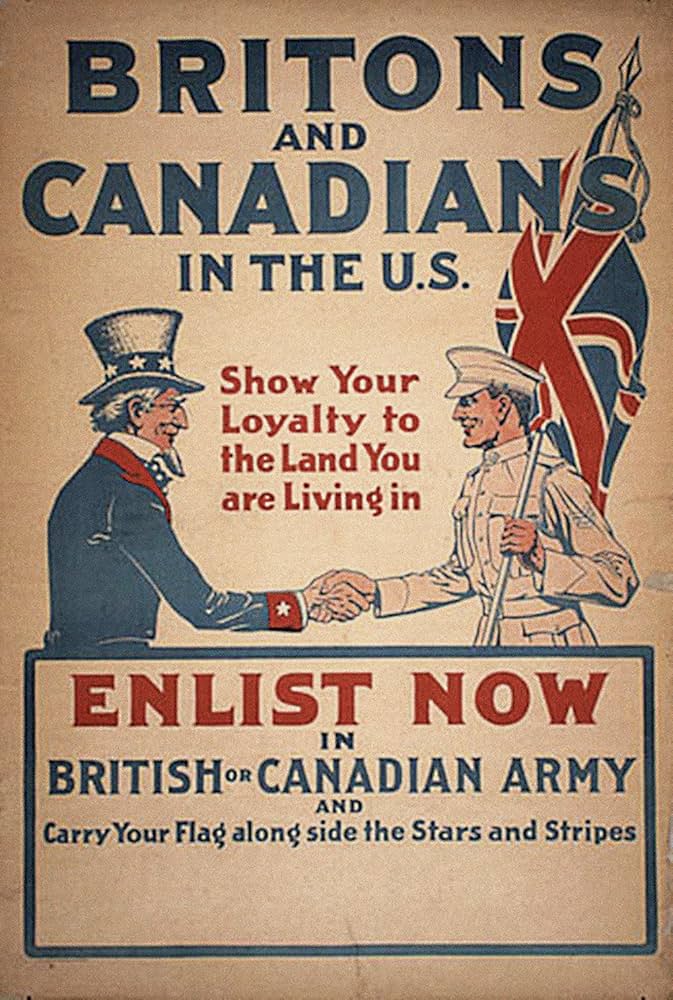This post contains affiliate links for which I may make a small commission to help keep the site running. You will not be charged extra for these items had you not clicked the links. Thank you for your help to keep the site running!
Hidden deep in America’s military planning rooms of the 1920s, there was a special set of plans.
They were called War Plan Red, and they were part of a larger, color coded set of war plans.
Green was war with Mexico, Orange was war with Japan, and Plan Red…well, that was a plan for war with Britain.
In this post, we’re uncovering the truth behind this secret set of plans – not declassified until 1974, to figure out how the Americans thought they could win an imaginary war in the 1900s with Britain, why poor Canada had to get so involved, and what exactly the purpose of these plans were.

Were they serious or just for fun?
Obviously, as you know if you’ve read a history book, it didn’t happen – but could it have?
Now the UK and US have have fought some pretty major wars against each other over the years: the American War of Independence, which was obviously over the US’s desire to be independent and to break away from British rule, and the War of 1812, which had to do with disagreements over trade, western expansion, and Native American policy as well as one pretty big issue that I’ll explain briefly.
The Americans accused the British of essentially forcing American sailors into service for the Royal Navy – the British argument was that the sailors who had been captured had escaped from their navy and were British and allowed to be forced to return.
The American argument was that they took many free soldiers who had American citizenship.
Ultimately the War of 1812 ended in a draw, and so international relations between the UK and the USA were perhaps not the best they had ever been, but they figured it out.
So, why, around 1930, was there a documented American plan for a war with the British Empire?

There are 2 schools of thought, with some overlap.
The first is that Plan Red was really only ever a practice, a mere simulation – it was just a theoretical way of testing out plans and the UK and US relations were actually improving during this time period so it basically meant nothing.
On the other hand, some historians suggest that even though relations between the country were improving, they weren’t yet well established or that special.
There was an undercurrent of tension still, or the possibility of tension, and those on the planning boards could very much remember a time when the relationship was more tense than not.
The Americans did believe that such a war was improbable, but they also were getting word that Britain was irritated by America’s insistence on full repayment of its war debt and the American government’s attiude of quote, “isolation and aloofness.”
So while the plan never received presidential or congressional approval, as it never made it that far, War Plan Red was approved in May of 1930 and updated in 1934-1935.
What was the plan, then? How did America see this unfolding?

There were 2 assumptions they made to calculate their war strategy, the first being that if the US and Britain went to war, Britain would have the upper hand in the Royal Navy, but that Britain would not try to directly invade the US by ocean, but instead by using Canada as a staging area.

The counterpoint to this would be that the US Navy would be able to overcome the Royal Navy simply with the means to essentially shipbuild like crazy people if needed, but at first, the UK was believed to have the upper hand.
So the Americans needed a way to make sure that the Brits couldn’t sail to Canada with supplies and use Canada as their ally and staging area. The Americans had no intentions of going to the UK and waging war, there, but instead, they were pretty willing, in this plan, to destroy Canada as collateral damage.
If they could blockade Canada’s ports and cut off food supplies, they believed, they would be successful in fighting a defensive battle against the Brits. Canadanians, if you’re watching, this gets a bit gruesome so sorry in advance about this.
First, America wanted to capture Halifax, a port city, using poison gas and cutting the undersea cable, severing the connection between Britain and Canada.
They had some backup plans that involved cutting off railways, but their next move would be to occupy Montreal and Queubec City, as well as Ontario and the Great Lakes.
Even Vancouver, far away from Europe, had to be considered just in case this acted as an “inroads” for British troops.
The Americans planned on seizing Canadian Power plans near Niagara falls and make sure they controlled the railways from Winnipeg.

As you can tell, while it is an offensive plan when it comes to taking over Canada, it is a defensive plan when it comes to being attacked by Britain.
The plan was really about how to respond to an “out of the blue” or surprise attack by the UK.
The fear, within this plan, was that Britain would try to target America’s manufacturing cities of the North like Washington, New York, and Pittsburgh, where they could destroy America’s war-making industries and cripple the US’s potential to fight.
The US assumption in War Plan Red was also that they were vulnerabl via the Panama Canal, the Phillipines, and the American Islands in the West Indies, but they believed that in the early stages of any conflict, they’d just leave these places alone to fend for themselves.
The Americans assumed that Canada would take Britain’s side, and didn’t think much in the plan about what would happen if Canada declared neutrality in the situation.
They were actually thinking they would reject the neutrality statement and carry on anyway unless Canada really made it obvious and gave “material guarantees” like allowing American occupation of the main Atlantic ports.
The Army was the main branch of the military to be used, and the US Navy had a limited role in the plan – again, it was thought that using the US Navy to strike against British trade wouldn’t really work and risk offending people it wasn’t supposed to.
And we have to remember that at the time, the American policy of isolation wasn’t going to help them find too many allies in a war against the British Commonwealth.
They thought perhaps India may revolt and French Canadians could turn their nose up at the British, but they didn’t’ have the same backing that the British might have had with their ties in Europe.
In the updated version of the plan around 1934, they included which specific roads to take into Canada, just in case someone got lost I guess – there was no GPS at the time.
Clearly, as I mentioned, this plan never had to take place.
By 1939, the world had much bigger problems than whether America needed to occupy Winnipeg with the outbreak of World War II.
This war would see the UK and US become even tighter allies and while the plans were retained, they were of course never actually used.
Now, did Britain have a strategy for war against the US during this time?

Nothing formal – they, like the Americans, really, essentially wanted to cooperate with the US to try and maintain peace due to shared language, culture, and goals, but they did have a fear that the way they could be forced into war with America would have to do with trade regulation that happened during a war with another nation.
They actually didn’t have many plans to invade Canada to help in a war like this – there was the Defence Scheme No. 1, created on April 12, 1921 by the Canadian Director of Military Operations that would try to use Canada for a surprise invasion of the northern United States as soon as they had evidence that the US was trying to invada Canada, but Britain’s thought was that it was going to be near impossible to defend Canada against the US so planned to abandon it – sorry, Canada.
Instead, the Brits believed that the best way would have been to attack the Americans from the Western Hemisphere, probably Bermuda, with ships based in the West Indies.
And in fact, their main concern for their military talks at the time was that the US would try to cross the Atlantic and use a base in Europe as an ally.
The American’s weren’t planning to do that in their plans, felt like too much effort, I guess.
Again, these military mockup simulations and plans are common – you don’t want to be reactive when it comes to war, and it’s not unusual to think that the US did want to have a plan in case the “unthinkable happened” – you don’t want to improvise, and we currently have no idea what types of plans are kept behind closed doors that will be declassified 100 years from now telling us what each government believes is a threat – even if a low one – during this time period.
